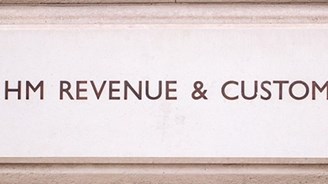Route 102 – One man’s year-long journey……Day 63

To mark this momentous year for UK GAAP, I'm embarking on a mission to work my way through FRS 102, reading a portion on each working day of 2015 and writing a short blog entry on my thoughts and musings (be they few or many).
Day 63 (12 Jun)
I rashly wrote yesterday that we'd get on to dealing with fair value gains and losses on investment property today, but I am getting ahead of myself. We've only actually covered para 16.1 so far. Let's look more closely at the definition of investment property in 16.2-16.4.
Investment property is defined in 16.2 as 'property (land or a building, or part of a building, or both) held by the owner or by the lessee under a finance lease to earn rentals or for capital appreciation or both, rather than for (a) use in the production or supply of goods or services or for administrative purposes; or (b) sale in the ordinary course of business.'
This is less rigid than SSAP 19. Paras 7 and 8 of this latter standard define investment property as follows:
'an investment property is an interest in land and/or buildings:
(a) in respect of which construction work and development have been completed; and
(b) which is held for its investment potential, any rental income being negotiated at arm's length (para 7).
The following are exceptions from the definition:
(a) A property which is owned and occupied by a company for its own purposes is not an investment property.
(b) A property let to and occupied by another group company is not an investment property for the purposes of its own accounts or the group accounts (para 8).'
The FRS 102 definition would broadly accept the SSAP 19.8(a) exception, that a property occupied for a company's 'own purpose' means a property held for the uses spelt out in FRS 102.16.2 (a) and (b). However, SSAP 19.8(b) is not replicated in FRS 102. The implication is that, where a property owned by company X is let to and occupied by another group company Y, the treatment in X's accounts will depend on whether it is being held to earn rentals or for capital appreciation or both. In other words, we have to apply judgement whereas SSAP 19 took the decision out of our hands.
What's the implication of this? Let's stick with X and Y from the previous paragraph, and outline a scenario:
X and Y are subsidiaries of a parent, P. X is a property management company and owns and rents a number of commercial properties to third parties, charging them a market rent. Y is a hotel operator. Its hotel is owned by X and rented to Y, at a market rent. P prepares group accounts.
Under SSAP 19 the treatment is easy. The hotel is excluded from SSAP 19 and is treated as a trading asset by X (even though X doesn't use it for its own trade). The group accounts prepared by P similarly treat the hotel as a trading asset (it is, after all, being used by Y for its trade). So on consolidation, there is no need for adjustment since X's individual accounts and the group accounts are in harmony.
Under FRS 102, the natural conclusion would be that the hotel is an investment property for X's individual accounts but a trading property in P's group accounts. Thus on consolidation, the property would need to be reclassified from investment property to PPE. It may also need to be remeasured, if all similar trading properties are measured at cost. So FRS 102 has led to arguably a more coherent intellectual approach to the hotel, but one which will entail more accounting work.
We'll pick this up next week and think of some other scenarios that may lead to different outcomes...
P.S. If you missed the last instalment click here



